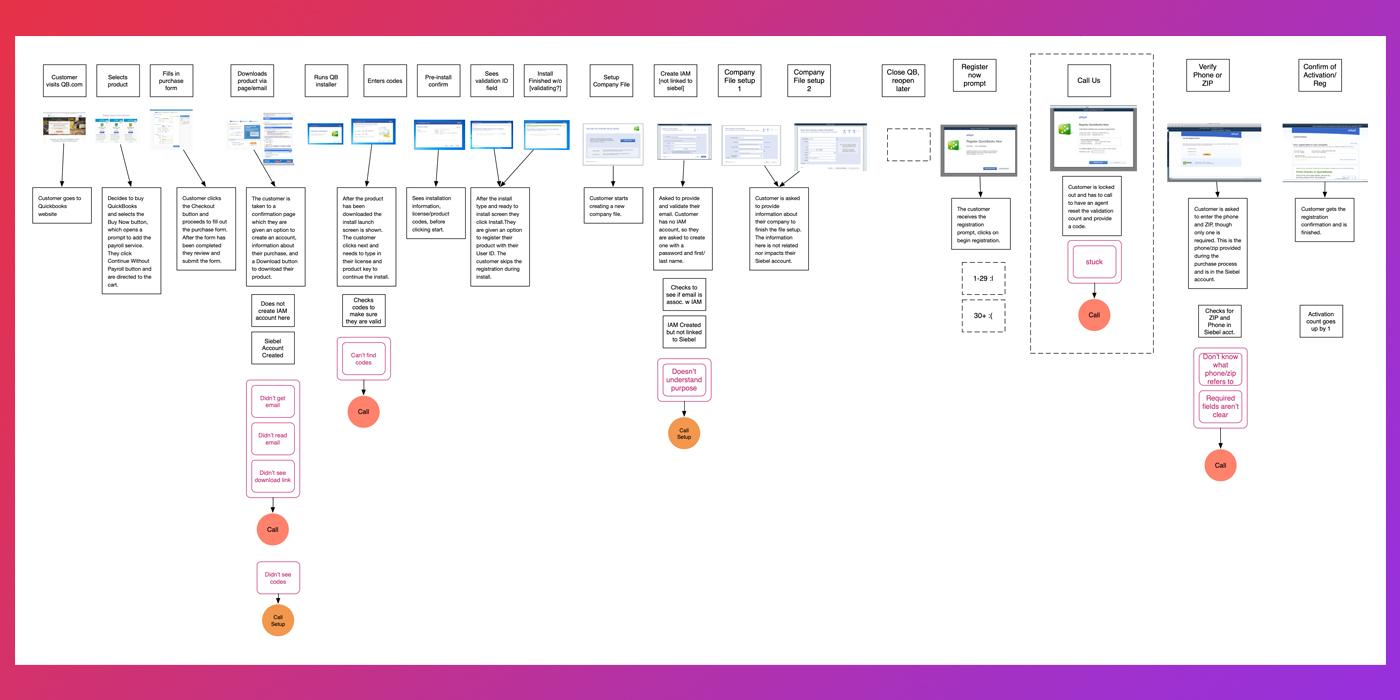The first wins for service design at Intuit
There were two prominent wins at Intuit right at the start of my time there that solidified service design as a winning method.
QuickBooks Activation and Registration
The first real bite of work that service design tackled was the QuickBooks Desktop activation and registration customer pain issue. It was the number-one source of customer care contacts in the company, resulting in millions of contacts, mostly phone calls, per year. The financial toll to Intuit and emotional toll to customers was astronomical.
A very small team of representatives was gathered, with representation from:
- Product design and service design
- Customer support Tier 2
- Customer account management
- Voice of the customer leadership
Half of the people present had never done anything like this and did not work in product design. We holed-up in a room for 4 days and just figured out what a service design approach looked like as we tackled this massive customer and organizational pain.


The foundation of what would become the service design practice was laid down during these sessions, as was the evidence of its effectiveness. Out of these sessions, 21 upstream areas were identified that would reduce the customer pain that resulted in the customer support calls. Out of these, 17 were actioned that resulted in a significant reduction in care calls.
This was a massive win and led to the talk I gave a few months later at the Service Experience Conference (as seen in the next section).
QuickBooks Subscription and Billing
Shortly after this project, I was recruited to participate in applying the same methods, only more advanced, to a new project based on the effectiveness of the activation and registration project. This is one of my portfolio items where you can read about it and see the artifacts in detail in the QuickBooks Billing and Subscription example.
Expanding the capability
More of the shots of things










